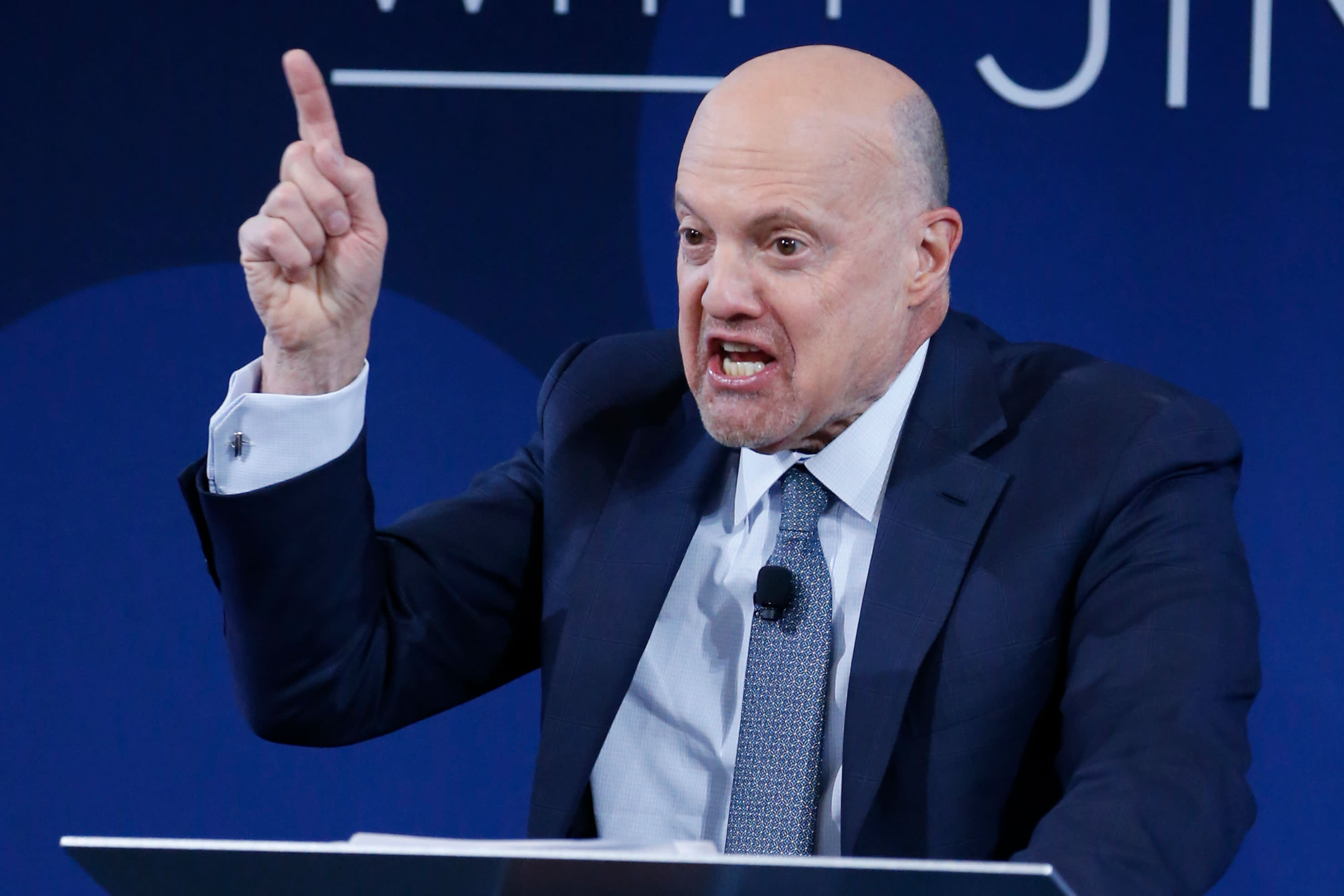As the housing market enters a period of potential turmoil, it’s time to consider the smartest commercial real estate stocks to sell.
Commercial real estate stocks are facing a combination of multiple factors that threaten the sector. That pressure poses the risk of leading to a collapse. Even absent a collapse, a substantial decline in price is highly likely.
Interest rates remain high and the Fed has signaled that it may again raise rates further. Work-from-home trends continue to be an issue.
Workers are dug in and ready to fight against a return to office. That affects these commercial real estate stocks to sell in a tangible way, as much of their business relies on office buildings and physically present workers.
Renewed rounds of tech layoffs hasten the stresses on commercial real estate. So, investors should steer clear as the bottom could fall out any day leading to rapid and substantial losses. Here are 7 commercial real estate stocks to sell before they get much worse.
| VNO |
Vordano Realty Trust |
$13.33 |
| BXP |
Boston Properties |
$47.74 |
| HIW |
Highwoods Properties |
$20.41 |
| KRC |
Kilroy Realty’s |
$26.91 |
| SLG |
SL Green Realty |
$21.99 |
| HPP |
Hudson Pacific Properties |
$4.50 |
| CUZ |
Cousins Properties |
$19.85 |
Vordano Realty Trust (VNO)
Vordano Realty Trust (NYSE:VNO) stock is an excellent example of how hard-hit commercial REITs have been in 2023. The company operates a portfolio of office and retail space primarily in New York City, with other holdings in San Francisco and Chicago.
Currently, several signs suggest that Vordano Realty Trust is already on a rapid downward trajectory. In the first three months of 2023, shareholder net income dropped to $5.168 million. A year earlier that figure stood at $26.478 million.
That is a signal shareholders should think twice about holding on to VNO shares.
Further, Vordano Realty Trust announced it is postponing dividends on its shares until the end of 2023. The dividend was yielding over 11% and remained one of the prime enticements for potential investors.
Generally speaking, REIT dividends are high because of the risk inherent in the business model. Once suspended, one of the major benefits of investing is gone.
Boston Properties (BXP)
Back in 2021, Boston Properties (NYSE:BXP) was featured in a Barron’s article about return-to-office stocks. Vaccinations and cherry-picked stories praising in-office work strengthened the narrative for BXP.
A year-and-a-half later, the pendulum has swung back in the other direction and office space operators are facing significant risks.
Boston Properties is the largest publicly traded U.S. firm in premier office spaces. It operates spaces in Boston, Los Angeles, New York, San Francisco, Seattle, and Washington, D.C.
It’s fair to assume that east and west-coast workers are more difficult to force back into office than some of their sun belt counterparts. That’s an important factor in states where workers’ rights are stronger. And it’s a detriment to Boston Properties in this case.
Net income fell from $143 million to $77.9 million during the first quarter. The company is leaning heavily into the biotech/life sciences sector by signing leases with companies in that industry. But there is little reason to believe that can make up for the losses overall.
Highwoods Properties (HIW)
Highwoods Properties (NYSE:HIW) rents exclusively within the sun belt. In sun belt states a top-down approach is more common: If employers favor RTO, then it’s much easier to implement.
At first blush, that looks to be one factor resulting in stronger operations at Highwoods Properties The numbers substantiate the idea that HIW is a better firm than the two firms immediately above.
Revenues increased modestly from $206.4 million to $212.75 million in the first quarter. Net income and income available to stockholders increased as well. But the company terminated more than twice as many leases a year ago during the same quarter.
It also raised rents by 15.9% while increasing its footprint by roughly 35%. That larger footprint costs more now as interest rates are higher.
Highwood Properties is pushing higher rents onto firms that will struggle in a recession. They may not pay at all, so those higher rents now might look good, but may be a false flag.
Kilroy Realty (KRC)
The vast majority of Kilroy Realty’s (NYSE:KRC) portfolio is concentrated in California, with a few of properties in Seattle and Texas. remaining properties, 7 are in Seattle and 2 in Texas. The same argument applies here for KRC stock: Workers in west coast states have a lot more leverage for working from home.
Shareholders continue to be skeptical about Kilroy Realty. The company’s fundamentals aren’t getting worse, though. Revenues increased by 10.3% in the first quarter and net income was up 6.7%. Yet share prices continue to slide and have lost more than 30% year-to-date.
My guess is that tech fears have something to do with investor reticence around KRC. The company signed a 20,000 sq ft lease at Indeed Tower during the quarter. Another round of tech layoffs is underway. That will affect Indeed as the labor market continues to soften for white-collar workers.
SL Green Realty (SLG)
SL Green Realty (NYSE:SLG) stock represents Manhattan’s largest office landlord. The financial center of the U.S. is ground zero for the RTO vs. remote work argument.
In late 2022, media reports of workers trickling back to NYC offices abounded. By early 2023 though, New York City Mayor Eric Adams was trying to force major Wall Street firms to mandate office returns.
That’s a clear negative sign for SL Green Realty given its position as the largest office landlord. The firm’s revenues increased in the first quarter, up approximately 20%.
Yet expenses increased a much faster 50% during the same period and SL Green Realty went from net gains to net losses. Interest expenses nearly tripled. Rental income declined. In short, it became a lot more expensive to be SL Green Realty quickly.
Mayor Adams knows his city depends on the revenues and taxes from office buildings remaining occupied. His bias in pushing for RTO is clear, but it’s not that simple.
Hudson Pacific Properties (HPP)
Hudson Pacific Properties (NYSE:HPP) is another of the highly concentrated commercial real estate stocks to sell. The company leases spaces to tech companies and media companies. That leaves it highly concentrated in San Francisco and Los Angeles, the respective epicenters of those sectors.
Its fundamentals are flat over the first quarter. The company made about $250 million in sales and lost $20 million. That’s pretty much in line with where it was a year ago.
What’s interesting about the company is how heavily it is betting on a resurgent tech sector. Over 80% of new leasing activity during the quarter occurred in San Francisco.
The potential problem there is that most of the resurgence in tech in 2023 was in major tech names and AI narratives.
Nvidia (NASDAQ:NVDA) has held up its end of the bargain with a very strong quarter. But will that success trickle down throughout silicon valley and boost the leasees at Hudson Pacific Properties?
If it doesn’t then HPP stock could be in for a real shock as those small firms ability to pay rent decreases.
Cousins Properties (CUZ)
Cousins Properties (NYSE:CUZ) stock provides the antithesis to the notion that Sun Belt REITs are doing better overall.
Net income available to stockholders decreased from $28 million to $22.2 million during the first quarter. Cousins Properties leased property to Silicon Valley Bank in Phoenix.
Although the company continues to receive payment on the property, the fact that it is prominently mentioned in the earnings report suggests the risk of default is high.
Cousins Properties is in a position in which revenue growth of 8.5% is slower than expenses growth, at 13.1%. That is likely to result when losses continue to grow.
The company also has a $62 million loan maturing June 1 for which it took out another loan to pay. In short, Cousins Properties looks to be taking out higher-interest debt to pay lower-interest debt which is a recipe for trouble in the long run.
On the date of publication, Alex Sirois did not have (either directly or indirectly) any positions in the securities mentioned in this article. The opinions expressed in this article are those of the writer, subject to the InvestorPlace.com Publishing Guidelines.
Alex Sirois is a freelance contributor to InvestorPlace whose personal stock investing style is focused on long-term, buy-and-hold, wealth-building stock picks.Having worked in several industries from e-commerce to translation to education and utilizing his MBA from George Washington University, he brings a diverse set of skills through which he filters his writing.












